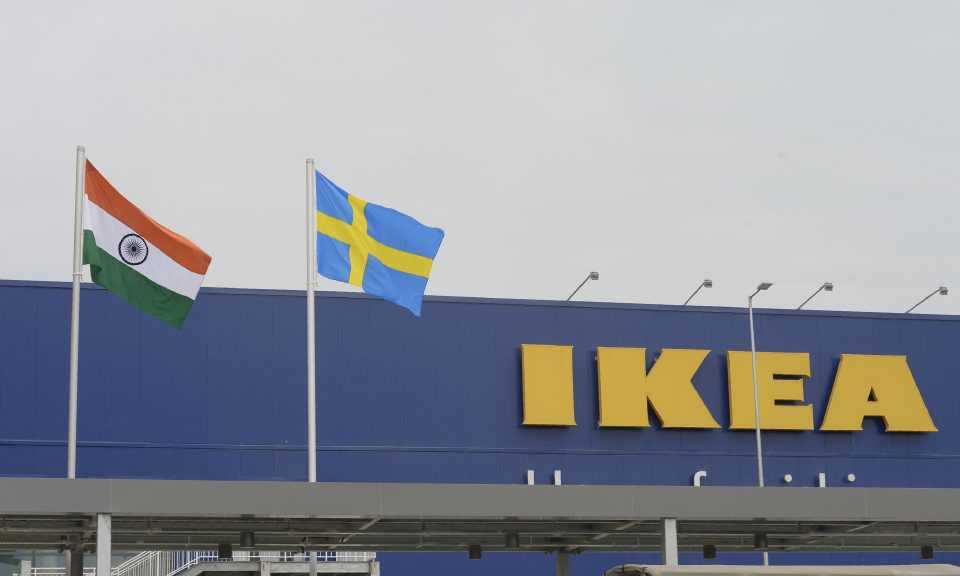IKEA might face big challenges in India’s unique market
11 August, 2018

If you thought frenzied crowds only lined up for rock concerts, football matches or the latest iPhone, guess again. The southern Indian city of Hyderabad saw a mad rush this week to buy do-it-yourself furniture and home goods as Sweden’s IKEA opened its first store in the country.
This was certainly a long-awaited milestone in an economy that started opening its consumer industry to foreign investment as far back as 1991 when it started a liberalization program.
Retail has been a holy cow for India’s policy-makers as lobbies fear the livelihoods of millions of shopkeepers are at stake. IKEA launched in India after many hurdles and a 12-year-long wait after the government gave the green flag for ‘single brand retail.’
Multi-brand retail is still a no-go area in India but Walmart got a foothold this year by acquiring online retailer Flipkart to combine with its own wholesale venture that can sell only to retailers, not end-consumers.
At one level, the near stampede at IKEA’s first store marks the arrival of cool-crazy Gen X, Gen Y and Millennials in the land of Mahatma Gandhi, the austere loincloth-clad leader who won independence for India from British rule.
At another, looking seriously, one would see questions looming on whether IKEA can pull it off in India because the country’s resources, income levels and tastes all have a uniqueness not so easy to address for every Western big brand trying to find a fortune in the world’s fastest-growing major economy – or the “next China.”
Hyderabad is home to a teeming technology industry, and its favorite employers include Microsoft, Facebook and Amazon. Police in the rocky suburban area understandably named “Cyberabad” even put out a traffic advisory as the crowds surged to walk the 400,000-square-feet IKEA store which an average Indian would compare with a cricket stadium for size.
Aiming to conquer India’s 1.25 billion population market, IKEA plans to invest more than $145 million, open 25 Indian stores by 2025 and hire nearly 15,000 staff. It also aims to source at least half its products from Indian suppliers in a job-spinning promise to the government.
However, there is more to India’s economy than it seems. Hyderabad alone has a population of 6.8 million compared with all of Sweden’s 10 million. IKEA’s big-store promise is typically built on three key points: It saves time for busy, well-paid consumers, offers rich designs and ideas for interiors and cuts back on labor costs with its DIY kits usually assembled by users at home.
But the premise might unfold differently in India.
A lot would depend on whether IKEA ‘Indianizes’ its offerings. It may like to take some pointers from the playbook of McDonald’s which ushered in vegetarian burgers and home delivery for the first time on the planet to serve the Indian market.
To its credit, IKEA did adapt well to the Chinese market with some modifications and price points to woo aspirational (read: West-loving) consumers. But it also faced issues like an embarrassing recall of 1.7 million chests and drawers in China. IKEA needs to find a golden mean between design, quality and affordability in Asian markets, and India is a tough one to crack.
For the moment, IKEA in India is happy to take pricing tips from Coca Cola, offering 1,000 “affordable” products below 200 rupees, the way Coke ushered in a five-rupee bottle in India. But seriously, are mugs and doormats good enough? An armchair at Rs 4,990 is extremely high for the market.
That brings us to India’s famed artisans. Most Indian cities have artistically inclined traditional carpenters. A lot of them worshippers of Vishwakarma, a Hindu god associated with craft-making and known as ‘The Divine Craftsman‘.
A good local carpenter can often rip off fancy designs if you show him an IKEA brochure. He may deliver a lookalike at a fraction of the price — sometimes with wood stronger than the light materials IKEA is famous for using.
In kitchenware and soft furnishings and such, IKEA may have to contend with the might of an Amazon or a Walmart-blessed Flipkart which increasingly deliver nearly anything online. Or there is the local Big Bazaar, where most home items are available at bargain prices.
At the other end of the upscale furniture game, there are nimble startups such as Pepperfry that offer to rich-but-laid-back Indian consumers trendy furniture ordered online with free home delivery and installation. Pepperfry sells iconic chairs that can give IKEA a run for its kroners at comparable prices with lush designs and the bonus of home service.
Indian families like to lounge at malls and eat out at weekends and an IKEA store with easy snacks and drool-worthy designs may be a good outing. With a 1,000-seat restaurant in its first store that sells samosas at Rs 10 (15 US cents), IKEA may wonder if it is in the fast food business or furniture. Is there a guarantee that experience tourism turns into sustainable shopping volumes when the novelty wears off?
The Swedish giant may well end up adapting its native coffee break idea of ‘Fika‘ for the land of the ‘tiffin’. Indians do love to chat over chai and snacks, whatever the brand of the chairs they sit on.
TAG(s):
